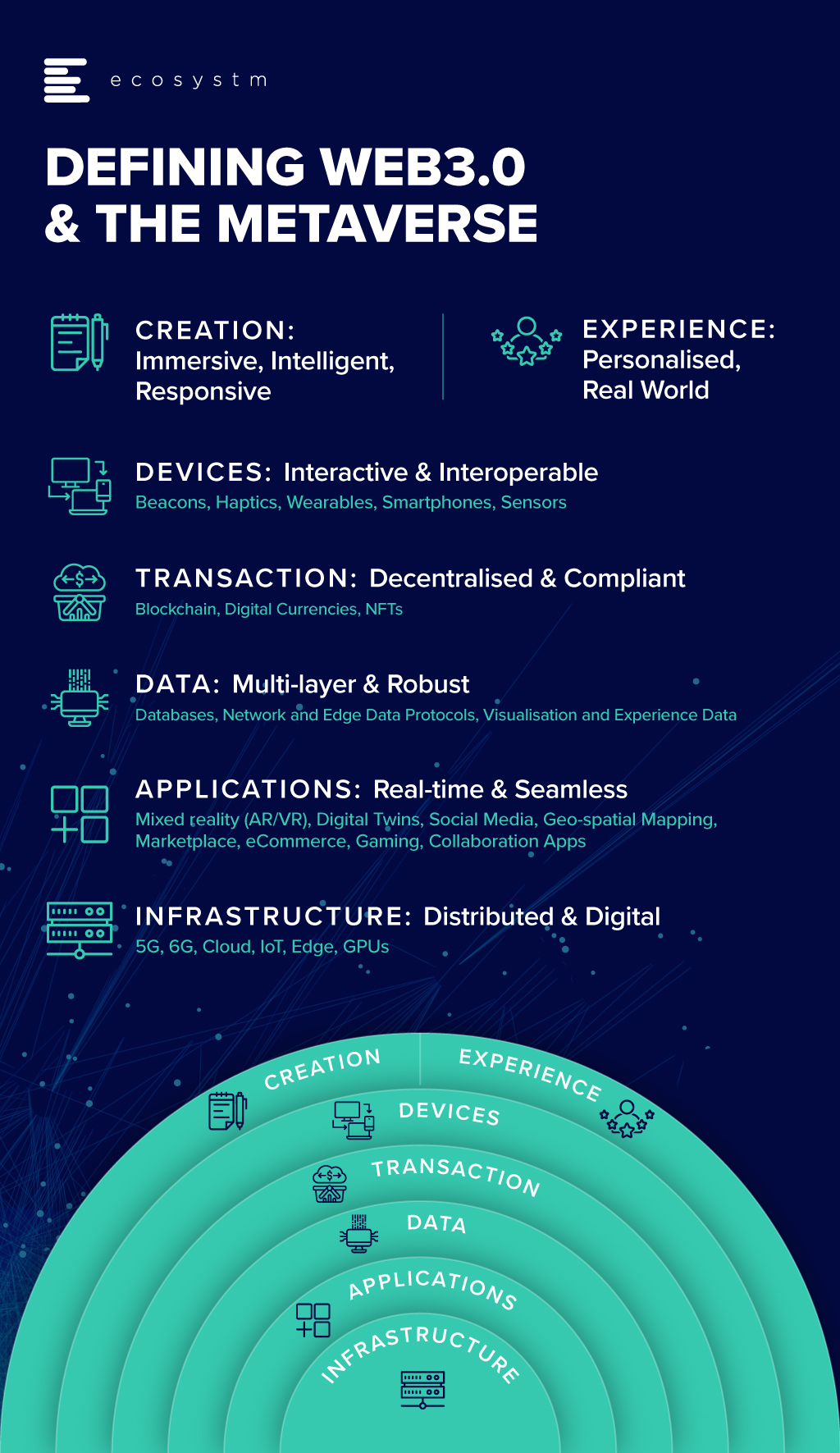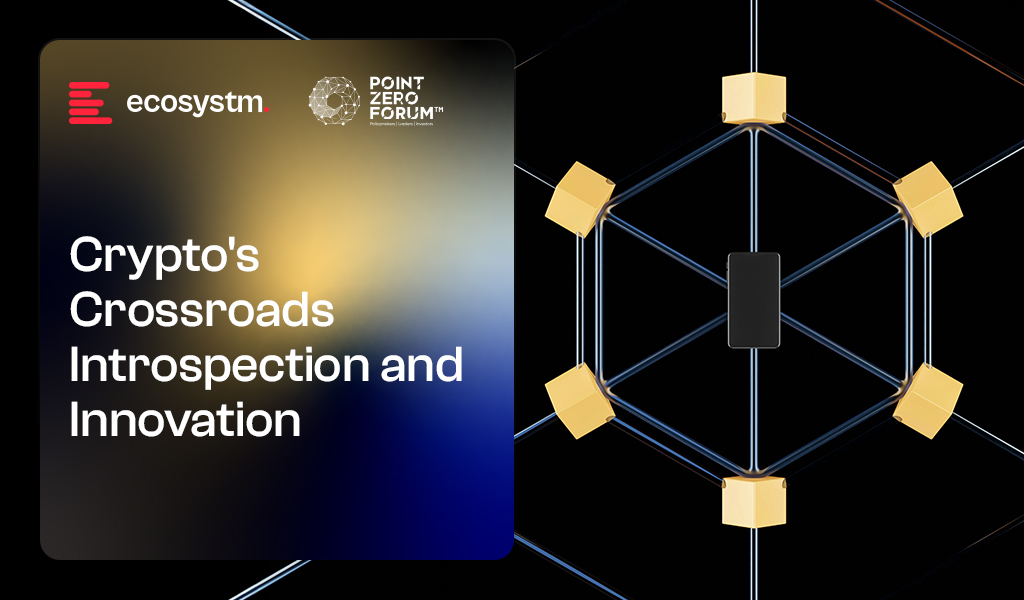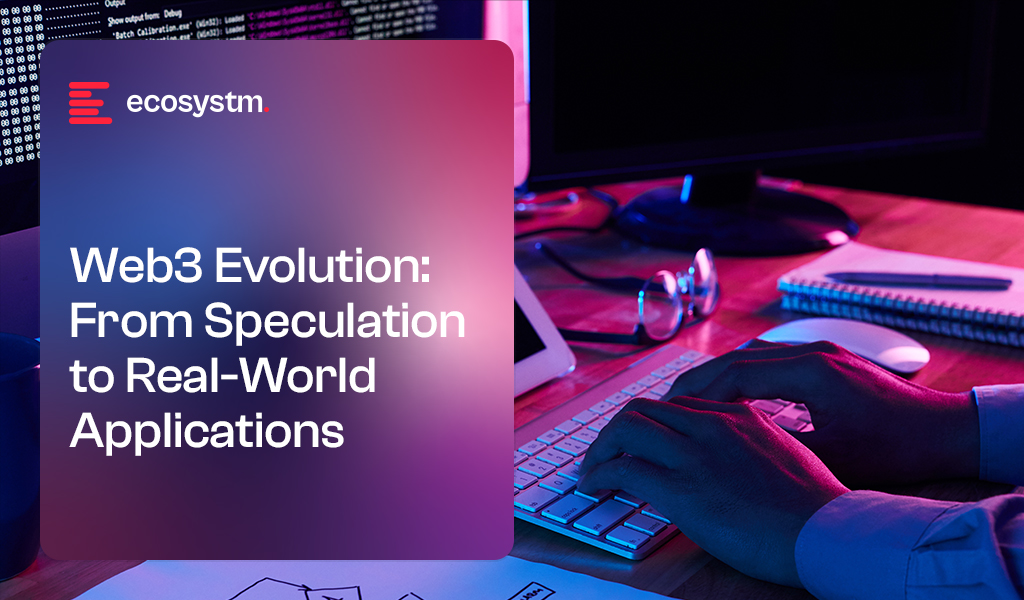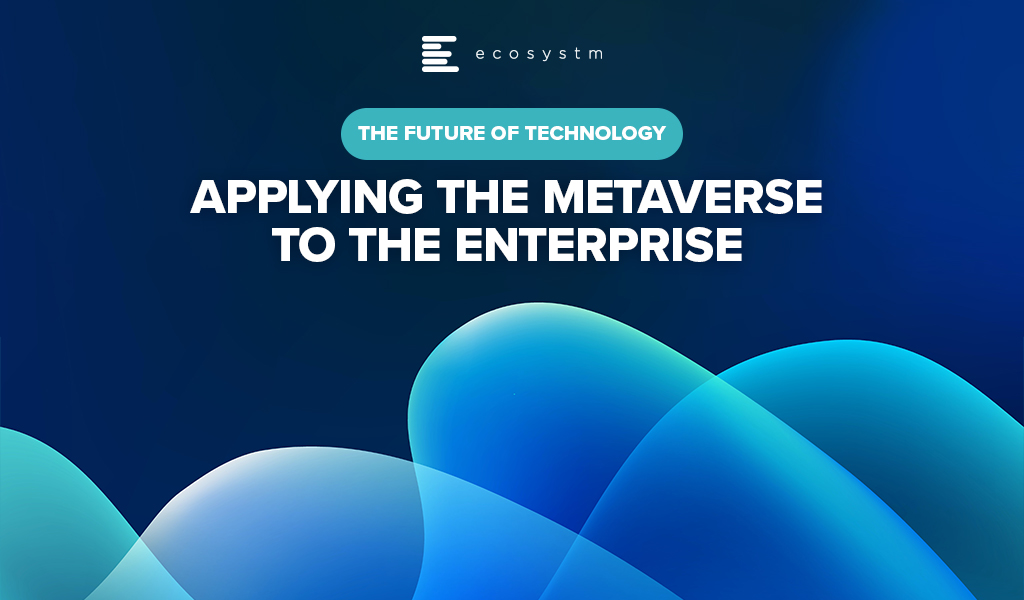This year’s theme at the ETHDenver – one of crypto’s OG annual gatherings, was “Year of the Regenerates.” This captures the core tension in Web3: the casino vs. the computer. On one side, the pump-and-dumps, meme coin frenzies, and hyper-financialisation. On the other, the cypherpunk ideals of decentralisation, open infrastructure, and a freer, fairer web.
It’s a timely moment for reflection. Crypto prices are tanking alongside global markets, Bitcoin is down, and headline scandals – like the USD1.3B hack of ByBit and millions lost by retail investors to the meme coin mania – paint a bleak picture.
But the full story isn’t just chaos and collapse. There’s real momentum beneath the noise – and a dose of optimism is exactly what the space needs right now.
ByBit: Green Shoots Amidst the Biggest Hack
The crypto market has seen renewed bearish sentiment, intensified by the USD1.5 billion ByBit hack on February 21, 2025 – the largest crypto heist to date, reportedly carried out by North Korea’s Lazarus Group. Notably, the attack’s impact was limited thanks to Copper’s Clearloop custody infrastructure, which protected user funds through its bankruptcy-remote design.
Yet despite the headline-grabbing loss, several market watchers have pointed to unexpectedly bullish signals emerging from the aftermath.
- Reduced Leverage and Market Stability. A potential silver lining is the decline in leverage across the market. With meme coin fatigue setting in, investors may be shifting toward more sustainable strategies. This could pave the way for long-term capital, especially as independent advisors begin recommending crypto and ETF products.
- Liquidity Injection from Loss Coverage. ByBit CEO Ben Zhou confirmed the company is covering 80% of the stolen funds through bridge loans. Some view this as bullish, arguing that while the stolen ETH remains on-chain, ByBit’s repurchases inject fresh liquidity into the market.
- No Bank Run and Trust in Exchanges. The lack of a bank run after the hack signals strong trust in ByBit’s solvency and response. Despite being one of the biggest heists in crypto, ByBit’s handling has been steady – prices have held, and users haven’t rushed to withdraw. That, in itself, is a positive sign. CEO Ben Zhou echoed this confidence, stating: “ByBit is solvent even if the loss isn’t recovered. All client assets are 1:1 backed.”
- Unexpected Positive Spin: Hacks as Catalysts. A contrarian view suggests that hacks, despite their damage, can drive platform evolution. This hack, for instance, could be seen as bullish – profit was extracted from value extractors, pushing ByBit to strengthen, become more anti-fragile, and reset stale positions and liquidity. The takeaway: crises can spark necessary resets and infrastructure upgrades – an unexpected upside in an otherwise negative event.
While some views may be unconventional, they underscore a maturing market better equipped to handle challenges, offering optimism for long-term recovery and growth beyond the current value and liquidity fluctuations.
Institutional Adoption Peaking Despite Bearish Sentiment
The tokenisation of real-world assets (RWAs) and the growing institutional adoption of digital assets are gaining momentum, even amid broader bearish sentiment in the crypto market. Driven by technological innovation, clearer regulations, and tangible benefits like enhanced liquidity, cost efficiency, and streamlined operations, these trends continue to evolve. Here’s an overview of the latest developments:
- Tokenisation of Real-World Assets. Despite bearish sentiment, the RWA tokenisation market is set for rapid growth. Analysts like Clearpool’s Ozean predict tokenised RWAs could hit a USD 50 billion market cap by 2025, driven by TradFi moving on-chain. Other forecasts from Standard Chartered (USD 30 trillion by 2034) and Boston Consulting Group (USD 16 trillion by 2030) highlight long-term potential, even if short-term conditions are volatile.
- Expansion of Asset Classes. Tokenisation is expanding beyond U.S. Treasuries and stablecoins to include real estate, private credit, commodities, carbon credits, and intellectual property. Real estate tokenisation, for example, is unlocking liquidity in traditionally illiquid markets, with platforms showing savings in home equity lines of credit (HELOCs) and collateralised loans. The total value locked in tokenised assets surpassed USD 176 billion in 2024, a 32% increase, with non-stablecoin assets growing 53%.
- Stablecoins as the “Killer App”. Stablecoins, pegged to assets like the U.S. dollar or treasuries, are becoming a safe haven in crypto. Their stability during market downturns has boosted their reputation as a “killer app” for blockchain, shifting focus from speculative tokens to practical, low-volatility tools. With a market cap surpassing USD 200 billion in 2025, Tether (USDT) and USD Coin (USDC) lead the way. New entrants like PayPal’s PYUSD (launched 2023) and treasury-backed stablecoins (e.g., Ondo Finance) are making waves. The “PayFi” race is on, with stablecoins integrating yield-bearing features linked to tokenised treasuries.
- Technological Advancements. Blockchain platforms are evolving, with AI driving RWA tokenisation and decentralised public infrastructure (DePIN). AI tools are enhancing risk assessment, compliance, and trading, making tokenised assets more attractive to institutions. Multi-chain technologies are improving interoperability and scalability, overcoming past limitations.
- Notable Projects and Milestones.
- BlackRock’s BUIDL Fund. Launched in March 2024, this tokenised fund became the largest of its kind, managing USD 657 million in assets by January 2025. BlackRock is also investing in tokenisation firms and exploring stablecoins, signalling a strategic shift.
- Clearpool’s Ozean. This protocol processed over USD 650 million in loans in Q4 2024, with a 51% rise in total value locked, reflecting growing traction.
- T-RIZE Group. In December 2023, the firm tokenised a USD 300 million residential project in Canada, showcasing real estate tokenisation at an institutional level.
- JPMorgan. Using its Onyx platform for blockchain-based settlements, tokenisation is now seen as a “killer app” for efficiency.
- Goldman Sachs. Its Digital Asset Platform is tokenising bonds, and repo transactions with Broadridge and J.P. Morgan total trillions monthly.
- Deutsche Bank. Joined Singapore’s Project Guardian in May 2024 to tokenise assets, reflecting institutional global interest.
- Regulatory Progress as a Catalyst. While regulatory uncertainty remains, 2025 shows promise. The potential appointment of crypto-friendly figures under a Trump administration could accelerate clarity in the U.S. Meanwhile, the Financial Action Task Force (FATF) is developing standards for tokenised RWAs, fostering cross-border adoption. Countries like Switzerland, Singapore, and Japan are already testing tokenised financial products, creating a more favourable regulatory environment.
- Institutional Sentiment and Investment Surveys. Institutional confidence is high. A BNY Mellon survey found 97% of institutional investors believe tokenisation will revolutionise asset management. EY-Parthenon research shows two-thirds of institutions are already invested in digital assets, with larger asset managers (AUM > USD 500 billion) launching tokenised funds. The Tokenised Asset Coalition found 86% of Fortune 500 executives recognise tokenisation’s benefits, with 35% actively pursuing projects.
- Bridging TradFi and DeFi. RWAs are bridging traditional and decentralised finance. Stablecoins tied to tokenised assets (e.g., treasuries) mitigate volatility, attracting cautious institutional players. Partnerships like Ripple and Archax aim to bring hundreds of millions in tokenised RWAs to the XRP Ledger, highlighting the convergence of TradFi and DeFi.
Resilience Amid Bearish Sentiments
Despite bearish market conditions driven by crypto volatility and macro pressures like inflation, institutional adoption is gaining momentum. Tokenisation offers tangible benefits – fractional ownership, 24/7 trading, and faster settlements – that solve inefficiencies in traditional systems. These advantages hold steady, regardless of market sentiment. For example, tokenised repos minimise operational errors and unlock intraday liquidity, while tokenised yields, such as treasuries, now outpace DeFi lending rates, drawing capital even in a “crypto winter.”
Regulatory fragmentation and security risks like hacking and smart contract vulnerabilities still pose challenges, while mainstream adoption, though accelerating, trails behind pilot successes.
Yet, the fundamentals remain resilient. With upcoming upgrades like Solana’s Firedancer client and Ethereum’s Pectra, blockchain infrastructure will advance. The focus for web3 builders will shift back to innovation, not token price charts. The path from meme coins to real utility may be long, but with the talent and creativity within the ecosystem, it’s far from impossible.

In my previous Ecosystm Insight, I spoke about Web3’s key initiatives in 2024 that caught my attention. As we navigate through the rapidly evolving tech landscape, I’ve chosen to highlight a few trends in the ecosystem that truly excite me – though this list is far from exhaustive. Interestingly, some of the most hyped trends, like the memecoin frenzy and AI agent platforms, didn’t pique my interest enough to dive deeper into.
Here are 7 trends I’ll be keeping an eye on in 2025.
Click here to download “Web3 Evolution: 2025 Trends To Watch” as a PDF.
1. Stablecoins: The Bridge Between Fintech and Crypto
In 2024, a significant shift occurred in how global fintechs view crypto, driven by stablecoins. What started as a collateral tool for crypto trading has now evolved into a proven solution for cross-border payments and remittances. Companies like Stripe, Revolut, Robinhood, and Nubank are expanding their role as crypto gateways, offering on and off-ramps alongside stablecoin-enabled payments. With global payment revenues projected to reach USD 3.3 trillion by 2031, traditional systems still face challenges like high fees, slow settlement times, and inefficiencies – issues that stablecoin rails are now set to address!
Expect more launches and M&A in this space as every web2 fintech becomes “crypto-ready”!
“Whether intentionally or because of their ability to support third-party apps, every fintech will become a crypto gateway. Fintechs will grow in prevalence and may perhaps rival smaller centralised exchanges in crypto holdings.” – PAUL VERADITTAKIT
2. Bringing Real-World Assets to DeFi: Simplifying Complexities
Over 12,500 DeFi pools currently serve around 7 million users, facing challenges such as onboarding, price discovery, liquidity management, and safeguards against arbitrage. It is expected that decentralised secondary marketplaces for trading real-world assets will be launched, aiming to simplify these complexities and potentially attract new users to DeFi.
3. Smart DePINs: The Rise of AI-Driven Coordination
More DePIN projects are expected to integrate AI and agentic computation to automate coordination, optimise demand and supply, and enhance interoperability. AI may also be used for tasks like node selection, choosing light nodes for accessibility and switching to heavier nodes for network reliability and redundancy. Nvidia’s embrace of DePINs like IPFS Filecoin could be a game-changer, with the company recently sharing potential approaches to leveraging decentralised data structures.
4. Web2.5: The Secret to Scaling Web3 Adoption
Tell me it’s crypto without telling me it’s crypto!
Prediction markets hit their stride in 2024, particularly with Polymarket and the elections, where most users didn’t even realise they were using blockchains. This could be the key to scaling web3 – enter web2.5. However, what is more exciting is the rise of the Telegram mini app ecosystem, the Worldcoin app store, and the Solana phone app store. These simple and intuitive web2-like interfaces are slated to bring more new and first-time users to web3 than some of the louder narratives like the AI-driven memecoin frenzy.
5. Proof-of-Humanity: Securing the Digital Self
While Tools for Humanity faced early criticism for scanning irises, the project, which now has over 20 million users, will gain more traction as people recognise the importance of proof-of-humanity. With the rise of AI-generated content and deepfakes, proof-of-humanity is becoming crucial – not just for combating Sybil attacks and frauds. Projects like SpaceID, Sign, and Mocaverse are also developing universal identity systems that enable users to access multi-chain services with a single private key or ID. Verifiable identity and credentialing via blockchains will be one of the most compelling use cases for the technology.
6. NFTs Reimagined: A New Era of Digital Assets
Story Protocol, which raised USD 80 million at a USD 2.25 billion valuation, aims to tokenise the world’s IP, placing originality at the heart of creative exploration and supporting creators. NFTs can be used not only for ID transactions, transfers, ownership, and memberships but also to represent and value assets. We can expect the emergence of many such NFT use cases beyond profile pictures, particularly in loyalty programs, brand memberships, and token-gated experiences. The second coming of NFTs is set for 2025!
7. Web3 Gateways: Wallets Evolve into Comprehensive Platforms
Similar to how browsers serve as gateways to the internet, web3 wallets like Metamask and Phantom are becoming essential entry points to the web3 experience. These wallets will evolve into all-encompassing platforms, integrating dApps and decentralised applications into their feature set. Along with enhanced security, leading wallets will soon offer services such as trading, gaming, minting, and token swapping, all directly within the wallet interface.
Ecosystm Opinion
It’s a reminder of how far we’ve come – and how much further we have to go. Yuval Noah Harari once pointed out that early use cases of the printing press were often conspiracy theories, and early Internet days were filled with chatrooms and adult content. We’re in the early stages of web3, and with each passing day, new use cases emerge.
This space is still unfolding, and it will be fascinating to see where it leads!

2024 was a pivotal year for cryptocurrency, driven by substantial institutional adoption. The approval and launch of spot Bitcoin and Ethereum ETFs marked a turning point, solidifying digital assets as institutional-grade. Bitcoin has evolved into a macro asset, and the ecosystem’s outlook remains robust, with signs of regulatory clarity in the US and increasing broad adoption. High-quality research from firms like VanEck, Messari, Pantera, Galaxy, and a16Z, has further strengthened my conviction.
As a “normie in web3,” my perspective comes from connecting the dots through research, not from early airdrops or token swaps. While the speculative frenzy, rug pulls, and scams at the “casino” end are off-putting, the real potential on the “computer” side of blockchains is thrilling. Events like TOKEN2049 in Dubai and Singapore highlight the ecosystem’s energy, with hundreds of side events now central to the experience.
As the web3 ecosystem evolves, new blockchains, roll-ups, and protocols vie for attention. With 60 million unique wallets in the on-chain economy, adoption is set to expand beyond this base. DeFi transaction volumes have surpassed USD 200B/month, yet the ecosystem remains in its early stages, with only 10 million users.
Despite current fragmentation, the future looks promising. Themes like tokenising real-world assets, decentralised public infrastructure, stablecoins for instant payments, and the convergence of AI and blockchain could reshape finance, identity, infrastructure, and computing. Web3 holds transformative potential, even if not in marketing terms like “unstable” coins or “unreal world assets.”
The Decentralisation Paradox of Web3
Decentralisation may have been a core tenet of web3 at the onset but is also seen as a constraint to scaling or improving user experience in certain instances. I always saw decentralisation as a progressive spectrum and not a binary. It is, however, a difficult north star to maintain, as scaling becomes an actual human coordination challenge.
In Blockchains. We have seen this phenomenon manifest with the Ethereum ecosystem in particular. Of the fifty-plus roll-ups listed on L2 Beat, only Arbitrum and OP Mainnet have progressed beyond Stage 0, with many still not posting fraud proofs to L1. Some high-performance L1s and L2s have deprioritised decentralisation in favour of scaling and UX. Whether this trade-off leads to greater vulnerability or stronger product-market fit remains to be seen – most users care more about performance than underlying technology. In 2025, we’ll likely witness the quiet demise of as many blockchains as new ones emerge.
In Finance. On the institutional side, some aspects of high-value transactions in traditional finance or TradFi, such as custody, need trusted intermediaries to minimise counterparty risk. For web3 to scale beyond the 60-million-odd wallets that participate in the on-chain economy today, we need protocols that marry blockchains’ efficiency, composability, and programmability with the trusted identity and verifiability of the regulated financial systems. While “CeDeFi” or Centralised Decentralised Finance might sound ironical to most in the crypto native world, I expect much more convergence with institutions launching tokenisation projects on public blockchains, including Ethereum and Solana. I like underway pilots, such as one by Chainlink with SWIFT, facilitating off-chain cash settlements for tokenised funds. Some of these projects will find strong traction and scale coupled with regulatory blessings in certain progressive jurisdictions in 2025.
In Infrastructure. While decentralised compute clusters for post-training and inference from the likes of io.net can lower the cost of computing for start-ups, scaling decentralised AI LLMs to make them competitive against LLMs from centralised entities like OpenAI is a nearly impossible order. New metas such as decentralised science or DeSci are exciting because they open the possibility of fast-tracking fundamental research and drug discovery.
Looking Back at 2024: What I Found Exciting
ETFs. BlackRock’s IBIT ETF became the fastest to reach USD 3 billion in AUM within 30 days and scaled to USD 40 billion in 200 days. The institutional landscape now goes beyond traditional ETFs, with major financial institutions expanding digital asset capabilities across custody, market access, and retail integration. These include institutional-grade custody from Standard Chartered and Nomura, market access from Goldman Sachs, and retail integration from fintechs such as Revolut.
Stablecoins. Stablecoin usage beyond trading has continued to grow at a healthy clip, emerging as a real killer use case in payments. Transaction volumes rose from USD 10T to USD 20T in a year, and yes, that is a trillion with a “t”! The current market capitalisation of stablecoins is approximately USD 201.5 billion, slated to triple in 2025, with Tether’s USDT at over 67% market share. We might see new fiat-backed stablecoins being launched this year, such as Ethena’s yield-bearing stablecoin, but I don’t expect USDT’s dominance to change.
RWAs. Even though stablecoins represent 97% of real-world assets on-chain and the dollar value of all other types of assets is still insignificant, the potential market for asset tokenisation is still a staggering USD 1.4T, and with regulatory clarity, even if RWAs on-chain were to quadruple, the resulting USD 50B will be a sliver of the overall opportunity. We can expect more projects in asset classes such as private credit – rwa.xyz is a great dashboard to watch this space.
DePIN. Decentralised public infrastructure across wireless, energy, compute, sensors, identity, and logistics reached a USD 50B market cap and USD 500M in ARR. Key developments include the emergence of AI as a major driver of DePIN adoption, the maturation of supply-side growth playbooks, and the shift in focus toward demand-side monetisation. More than 13 million devices globally contribute to DePINs daily, demonstrating successful supply-side scaling. Notable projects include:
- Helium Mobile: Adding 100k+ subscribers and diversifying revenue streams.
- AI Integration: Bittensor leading decentralised AI with successful subnets.
- Energy DePINs: Glow and Daylight addressing challenges in distributed energy systems.
- Identity Verification: World (formerly Worldcoin) achieving 20 million verified identities.
These trends indicate significant advancements in the web3 ecosystem, and the continued evolution of blockchain technologies and their applications in finance, infrastructure, and beyond holds immense promise for 2025 and beyond.
In my next Ecosystm Insights, I’ll present the trends in 2025 that I am excited about. Watch this space!

The Metaverse is the latest in a long line of social computing capabilities to have emerged over the past 20 years. Each of the technologies has brought with it key changes to customer and staff behaviours and influenced the portfolios of traditional corporate business systems. In the modern world, Enterprise Resource Planning (ERP), websites and their Content Management Systems (CMS,) and Customer Relationship Management (CRM) are no longer sufficient. Forward-looking enterprises can’t ignore the need to assess the key impacts of next-generation social computing platforms as they strive to embrace a Web 3.0 presence through optimised internets, digital distribution channels and numerous online marketplaces. The Metaverse is deserving of some consideration in this assessment.
The Need for Perspective in Chaos
Attracting and retaining top talent is a key goal for any large enterprise because people drive the ultimate success of every organisation. In the more buoyant economies, more work is driving the need for more workers! Competition for resources is intense and most industries, including Government, are now experiencing the challenges inherent to a tight labour market. This in turn is continuing to fan the flames of digital and cultural transformation programs as CEOs and their leadership teams reposition for relevance.
I recall one such transformation program in a client organisation from a few years ago. It started, as they do, with a sweeping internal review of customer relationships, service delivery performances, product portfolios, service capabilities, competitors, organisational culture, and skills. It was to spearhead a program of transformation underpinned by a new labour force, unified in its desire to meet every need of their clients. Its brave and remarkable outcome was identifying and accepting that the role of the “individual” inside the organisation would be the number one catalyst for future success in dealing with everything outside it: employee experience driving the customer experience.
On reflection, it is not hard to see how individuals lose their way inside large organisations. Over time, as staff numbers increase to support growth in customers and projects, complexity starts to bleed across the business and into the culture. At a time when better communication and more access to information has become more important than ever, these attributes have become even harder to find. And not just any information; information that is relevant to the individual and specific to their role; that is critical to providing perspective within the chaos. Enter the Metaverse.

What is the Metaverse for an Enterprise?
The Metaverse is everything we simultaneously love and loathe about technology. But what an opportunity! The ability to reinvent. To embrace. To transform. But also, a gilded Parthenon of extraversion and Silicon Valley excess. Yet another mirror of some contrived reality. Another step away from a simpler, more wholesome time.
Let’s all calm down. When applied to the enterprise, a Metaverse is nothing more than real life in digital form. It provides a platform capable of:
- Developing a virtual representation of an organisation, its structures, and objectives,
- Visually representing complex concepts to allow contextual interpretation by an audience,
- Encouraging excitement and enjoyment from experiencing old information in new ways,
- Giving the user a sense that it’s all about them (literally placing them at the centre), and
- Delivering an environment that provides the opportunity to integrate with existing and emerging tools.
In the context of that transformation program from many years ago, in most large organisations the information that employees need to feel valued and add value does exist but is largely inaccessible or resides in fragmented islands of data. This is because, forged through decades of compliance, the organisational view of information within companies is process-oriented. Most databases are unpopular. Most intranets are over-populated and under-utilised.
Achieving a desired cultural outcome (that recognises the individual as the number one catalyst for future success) necessitates that this process-oriented model changes to a more individual, highly contextualised, and information-driven view. Maybe even a unified collaborative data hub with a unique presentation layer. Maybe even a Metaverse!
In my next insight, I’ll share a glimpse of how life inside a Metaverse will look like for an enterprise.














